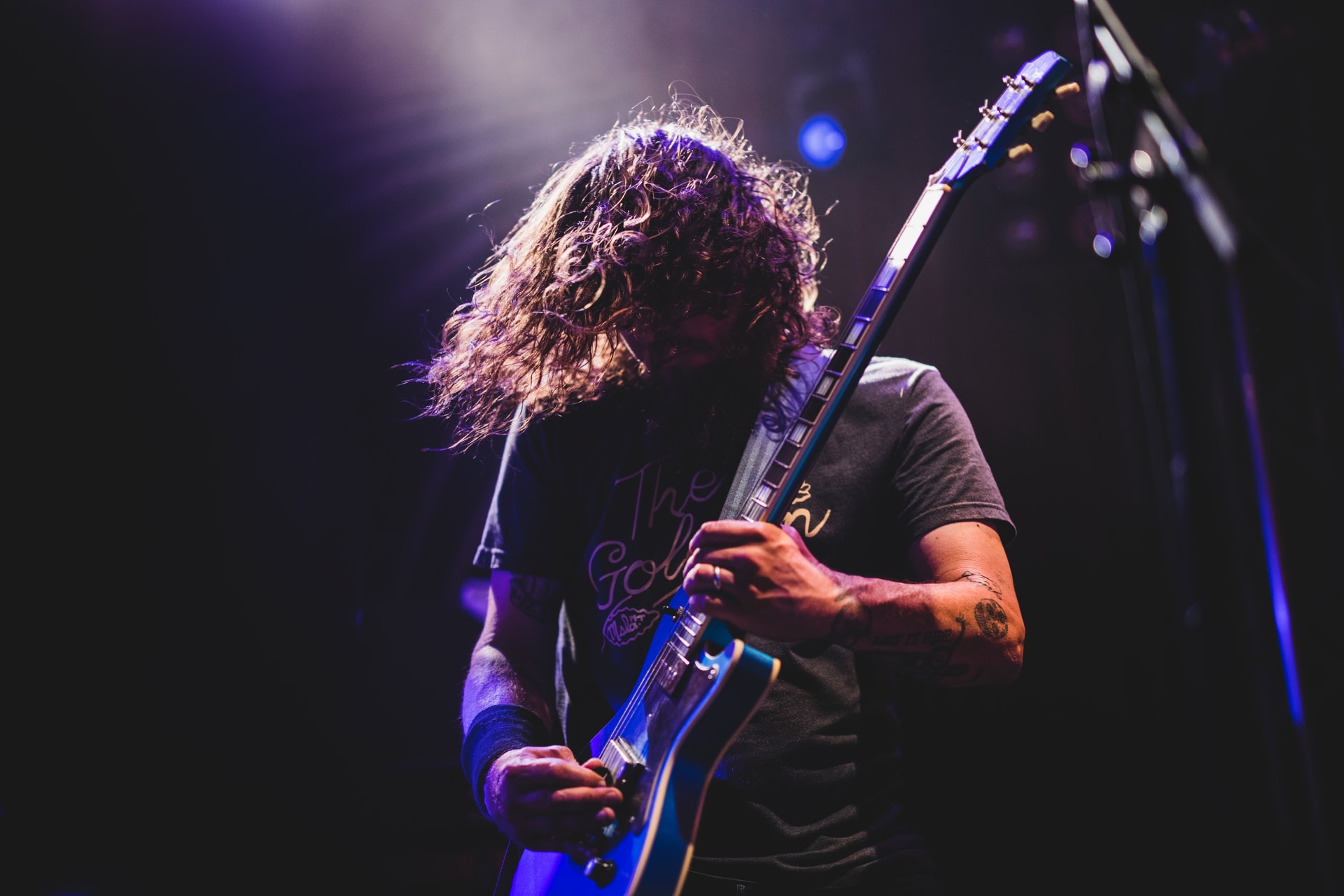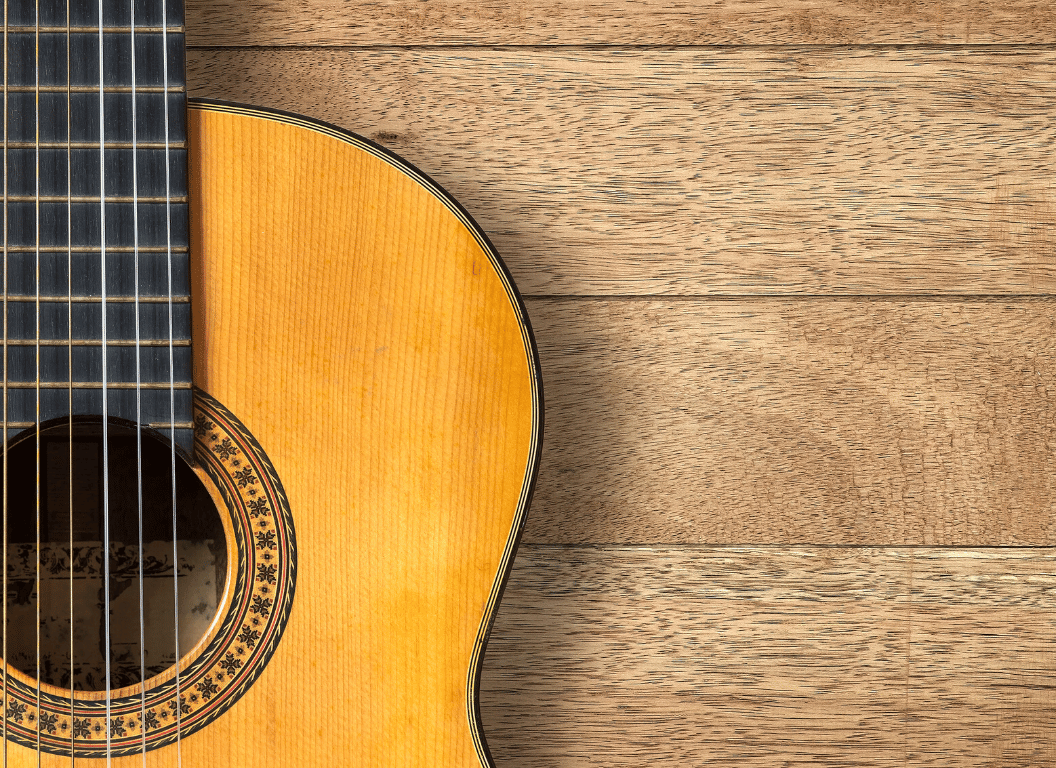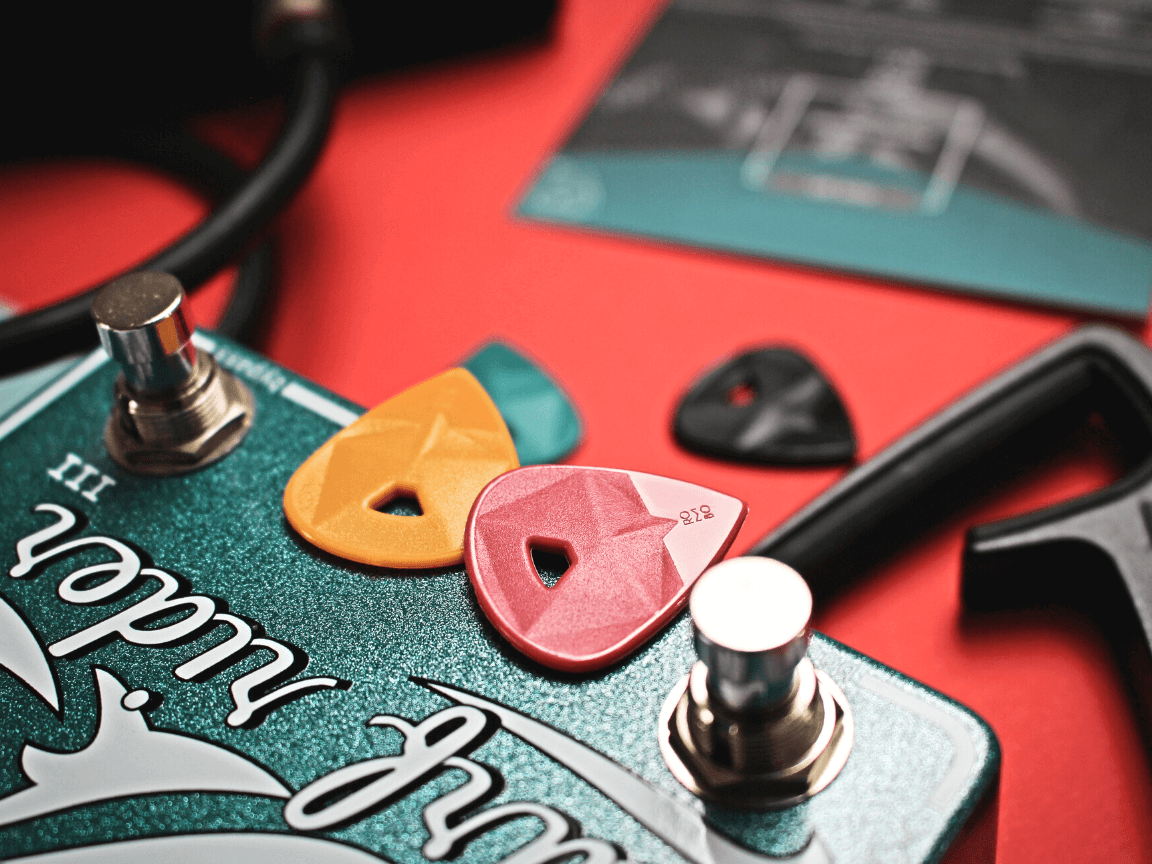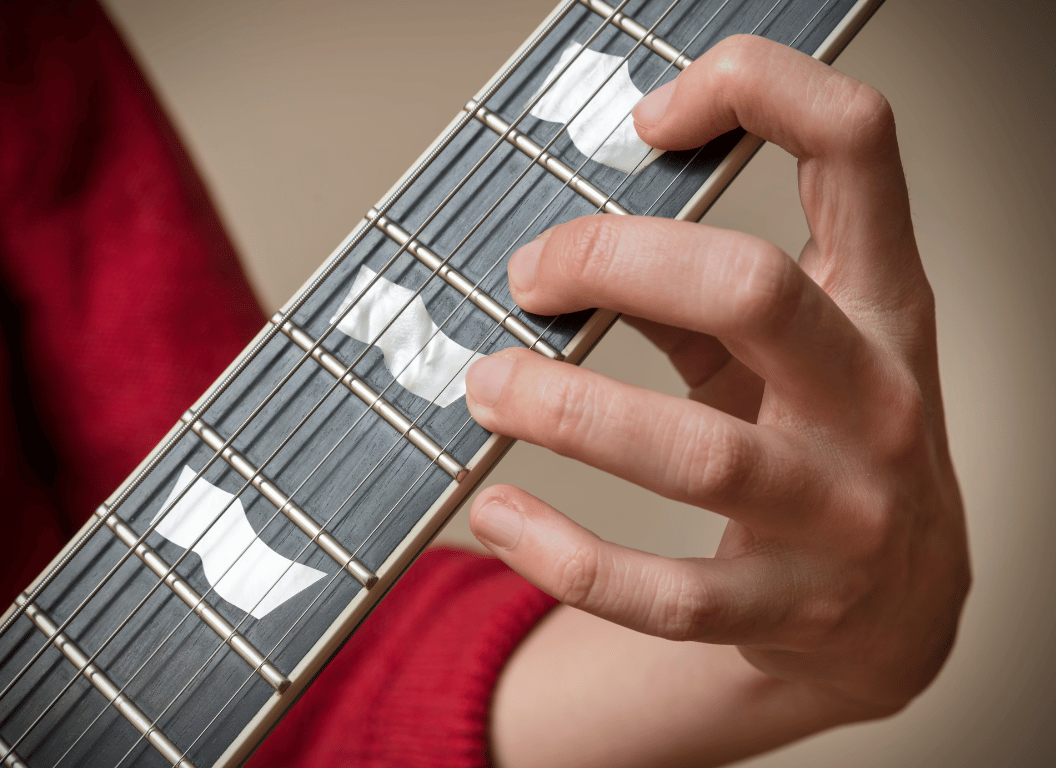Just like a lot of people, I have also wanted at some point in my life to learn how to play the guitar fast, or in other words, to simply increase my guitar playing speed.
The idea in my mind was very clear, I just wanted to imitate those guitarists who are able to solo their hearts out, faster and cleaner than anyone else.
Playing the guitar fast and clean requires a lot of practice and time. Not only that, but it also requires a strong determination and passion to encourage yourself to keep practicing harder.
In today’s article, I will show you 20 different things that you can start doing now, that will help you increase your guitar playing speed over time.
Let’s start…
Table of Contents
- How to increase your guitar playing speed?
- 1- Stretch your fingers before playing
- 2- Practice as much as possible, but don’t overdo it
- 3- Start playing slowly and increase your speed over time
- 4- Do a lot of guitar exercises that improve speed and accuracy
- 5- Improve your fretting hand and picking hand synchronization
- 6- Make use of faster guitar playing techniques
- 7- Use a metronome when you’re practicing
- 8- Pay more attention to how you are holding your picks
- 9- Lower the action on your guitar
- 10- Take breaks from playing guitar
- 11- Relax your hands and avoid any tension while you play your guitar
- 12- Record yourself playing and analyze your progress
- 13- Apply the right amount of force on the frets and use your fingertips
- 14- Prioritize good form over speed
- 15- Sometimes is more about what you don’t play than what you play
- 16- Never play faster than what it takes you to play correctly
- 17- Don’t ignore working on chord progressions and chordal exercises
- 18- Watch videos of really fast guitar players
- 19- Learn to improvise while applying these techniques
- 20- Be patient and enjoy the journey
How to increase your guitar playing speed?
Like any other musical instrument, playing guitar is also an art that can’t be learned overnight.
With that being said, I have to say that by following these pieces of advice, you put yourself in a better position, but it’s not something that you do once and forget about it.
Our purpose with this post is to encourage you to develop healthy guitar playing habits, so think about it as things that you should do daily, or at the very least, every other day as a normal routine.
1- Stretch your fingers before playing
Just like if you were working out at a gym, stretching is also considered to be beneficial before playing guitar.
Your hand and fingers can get tired of playing the guitar continuously, and they can also feel very strange after not playing your guitar for a long time.
The movements of your hands, the synchronization between the two, and any possible finger hardening, all of this can be dealt with to a big extent by stretching your muscles.
Warming up prevents injuries by loosening your joints, and improving the blood flow to your muscles.
This will make your muscles less likely to tear, rip, or twist in a damaging way during your guitar playing session.
Stretching also helps prepare your muscles for all the hand movements that you’re about to perform with your guitar.
This next video is a great resource if you want to have some guidance that will visually show you the best finger stretches and exercises to do before playing your instrument:
Now, why is stretching so important to increase your playing speed?
Stretching helps you loosen up and release some tension in your muscles.
Tension will make you play slower, so this is a great way to “take it out of the equation”.
If you know that your hands and fingers are not tense and that you are doing the proper stretching before playing and you’re still playing slow, then you know that you might just need a little more practice to develop muscle memory in what you’re trying to play.
Tension can develop not only in your hands but in your wrists, arms, shoulders, and back; they all influence how you feel when you play the guitar in one way or another.
2- Practice as much as possible, but don’t overdo it
This might be too obvious to be discussed, but it is certainly necessary to mention it.
This is due to the reason that a lot of people have this assumption created in their mind that when you want to learn something, you should just overdo it until you become good at it.
This is truly not the case.
When playing guitar, consistency is key. Only regular practice can take you to higher success, especially when trying to play guitar fast and clean.
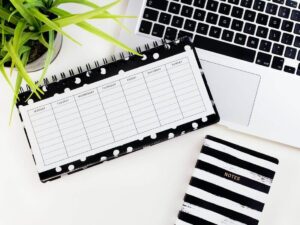
It’s easier to see progress when we stop and let our muscles rest for a while.
Simply put, I’d rather practice 30 minutes every day than practice 3.5 hours only once a week.
So why is this important in building speed when playing guitar?
Regular disciplined practice will help you get better at playing guitar, and better guitarists have patience, dedication, creativity, curiosity, and enthusiasm.
These things help you play cleaner and not miss notes when you play, thus also allowing you to increase your speed.
3- Start playing slowly and increase your speed over time
Slow and steady wins the race and this fits perfectly here.
Make a smooth start by playing the guitar slowly and then increase your speed over time.
This way, you will be able to create good hand synchronization and play your music in such a way that is “impossible” for you to get it wrong.
That was always my motto:
Don’t practice until you get it right. Practice until you can’t get it wrong.
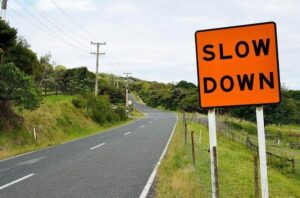
Most people know that this is good practice but only a few only dare to stick to it.
You had to learn to walk before you could run, so the same thing applies here.
Learn to play slowly in order to play fast, or at the very least, stick to regular speed, and increase it as you get better.
4- Do a lot of guitar exercises that improve speed and accuracy
If you have been searching for how to play the guitar fast or how to increase your guitar playing speed, then you have most likely come across a few guitar exercises that are meant to help you accomplish this.
These exercises are surely a great way to build muscle memory and accuracy.
Speed is a byproduct of accuracy.
If you haven’t heard that quote before, then take a quick second to really think about it.
What does it really mean to have accuracy when playing guitar?
Well, when we accurately play the guitar, we don’t miss notes and always remember each and every single part of what we’re supposed to play.
This allows us to increase our speed naturally by improving our precision and instinctively choose the best fretboard position to play in case we are improvising.
Accuracy is also all about placement and positioning.
In other words, you can choose to play the same melody in different strings thus allowing you to save that extra time when doing any transition.
Exercises to help you increase your speed and accuracy:
This next YouTube video is a great resource that you must watch.
It shows you some of the best speed and accuracy exercises to do while practicing the guitar and the instructor also talks about gaining separate left-hand and right-hand synchronization.
A few things that you should notice when watching this video is how both hands have a great impact on your playing speed.
If you take a moment and analyze yourself when you play, you might be able to tell which one of your hands is faster in your case.
There are two different possible scenarios aside from being fairly equal: either your picking hand or your fretting hand is faster.
It’s good practice to try to improve both, but sometimes it’s only necessary to work on that one hand that is making us play slow.
This takes us to our next point…
5- Improve your fretting hand and picking hand synchronization
It doesn’t matter if your picking hand is godly fast; if your fretting hand can’t keep up with it, you will play guitar slow.
That’s why terms such as “fretting hand and picking hand synchronization” even exist.
Synchronization is one of the foremost aspects of learning guitar and playing it fast and clean.

A lot of the new guitarists don’t understand this and get frustrated by not being able to play a certain song or guitar lick.
Ultimately, one of the main things that keep them from getting to that next level is their ability to coordinate each movement that they do since this is their ability to fret and pick each note together at precisely the same time.
This prevents inarticulate notes or sloppy noises that come from picking your guitar string when it’s not being fretted.
This YouTube video is a great resource that you should definitely watch:
He explains how you can improve your fretting hand and picking hand synchronization by doing very simple exercises at least daily.
In this video, he also mentions why some guitarists fail to get better at this and how little mistakes always have a lot of influence on the actual progress when attempting to be a better and faster player.
Also, the same thing applies to playing chord progressions. Your hands should be synchronized not only for soloing and playing riffs but also to make chord transitions at precisely the right time without keeping track of the tempo and beat.
6- Make use of faster guitar playing techniques
So what are the fastest guitar playing techniques?
There are many different techniques out there that allow you to play fast, some of them are:
-
Alternate Picking
When we make use of alternate picking, we are essentially employing alternating downward and upward strokes in a continuous fashion.
If the technique is performed at high speed on a single string or course voicing the same note, it may be referred to as “tremolo picking” or “double picking”.
In other words, this is very useful if you want to increase your guitar playing speed because instead of having to account for the time that it takes us to return to your starting position in order to repeat the same downward stroke, you can just use the upward pick movement to do a continuous hit of the same string.
These two movements across the strings are going to be alternating back and forth all the time when you play, thus providing you with a faster way of playing solos and melodies.
-
Sweep Picking
Sweep picking is when the guitarist plays single notes on consecutive strings with a ‘sweeping’ motion of the pick while using the fretting hand to produce a specific series of notes that are fast and fluid in sound.
This technique is particularly useful for playing arpeggios at a really fast speed.
Simply put, playing any two or more adjacent strings one right after the other using all downstrokes when going down or using all upstrokes going up would be considered sweep picking.
-
Economy Picking
Economy picking is a guitar-picking technique designed to maximize picking efficiency by combining alternate picking and sweep picking.
It’s when you use one continuous pick motion to cross strings, so instead of using downward or upward style alternate picking, you’ll be picking from one string to another in the same direction.
The guitarist changes to sweep picking just in the direction of travel!
An upward stroke if changing to a lower pitch string, and a downward stroke if changing to a higher pitch string.
The main purpose of economy picking is to minimize the movement of your right hand to avoid the actual jump that often occurs in alternate picking.
7- Use a metronome when you’re practicing
A metronome is a device that produces an audible click or sound at a regular interval that can be set by the user, typically in beats per minute (BPM).
Guitarists use metronomes to practice playing to a regular pulse and to train themselves to be and play on time as indicated by the tick.
Nowadays, most guitarist’s metronomes don’t look like this anymore:
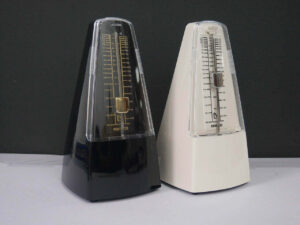
In fact, we don’t even have to spend our money on buying a metronome anymore, there are plenty of mobile apps that allow us to have these awesome features for free.
For example, GuitarTuna, which is mainly a guitar tuner, has an amazing free metronome that we can use.
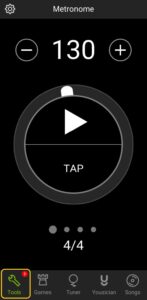
And even if you don’t want to download any apps on your phone, you can just do a quick Google search for “metronome” and Google will provide you with a very simple yet effective tool that you can use for this matter.

Why using a metronome to build guitar playing speed so important?
Well, training with a metronome can help you to gradually increase your playing speed and learn to focus on slowing down when necessary.
It helps you play at a slow speed so that you can instead pay attention to your accuracy and form instead of just wanting to go faster all the time.
A metronome will also allow you to improve your overall natural sense of timing, which in the future if you want to play with other people or be in a band, it will be very beneficial to have learned these things beforehand.
Most importantly, it can allow you to track your learning progress in a quantitative way. Meaning that you will have the ability to know at exactly what BPM you are able to play a certain song or melody.
For example:
- A tempo marking of 60 BPM equals one beat per second, while 120 BPM equals two beats per second.
If you know that you can play a song at 120BPM and your goal is to reach 160BPM, then you can increment your metronome by 1BPM each day until you succeed in playing at 160BPM.
This is more helpful and easier to do than just jumping from 120BPM to 160BPM in just one day, or even worse, not tracking your speed and progress at all.
8- Pay more attention to how you are holding your picks
If you don’t play your guitar using picks, then this does not apply to you.
In that case, I encourage you to read this one article:
On the other hand, if you play your guitar using picks, you may not even notice it, but one of the reasons why you might not be playing to your full potential speed could be because you’re simply holding your pick incorrectly.
Things like placing your pick at a wrong angle, your wrist position, and index-thumb grip, influence in one way or another how you perform when you play your instrument.
As you can see, there are many little details that you should pay attention to, these include:
- Using the side of your index finger instead of the face of your index finger to rest the pick.
- Relaxing the rest of your fingers to not cause any extra unnecessary tension.
- Loosening up your wrist and resting it along your guitar bridge.
All done together, it should look something like this:

Now, for faster speed, many guitarists usually recommend rotating the pick about 30-45 degrees in reference to the fretboard.
Doing this will also allow you to easily use edge picking to strike the strings with the flat face of the pick slightly tilted, thus preventing you from applying too much force and your pick from getting a bit stuck when you play.
This also allows playing techniques such as ‘alternate picking easier to achieve for almost any beginner guitarist.
9- Lower the action on your guitar
The lower your guitar action is, the lesser your fingers need to press on the strings in order to make them sound.
In other words, it will be much faster for you to play since you won’t have to push the strings too far against the fretboard.
Many people also believe, though, that regardless of your guitar action height, it really just depends on the guitar player for the most part.
While this is true to some extent, it is also very debatable.
Some guitarists are in fact more comfortable with higher guitar action, but some others definitely prefer and play better with a lower guitar action.
Now, a word of caution: simply doing this, will not instantly make you a faster guitar player.
Whether or not you can take advantage of a lower guitar action with your guitar playing style is another story.
Of course, it will potentially make you faster, but don’t get discouraged if you don’t start playing fast right away.
It will take time for you to adapt yourself to the new action height.
Also, it’s very important to say that, a good player can make a guitar sound good regardless of how high or low the action is.
You don’t need to have low action if you already feel comfortable with how your guitar already feels.
I say this so that you don’t go ahead and change something that’s already working for you.
Just use this piece of advice as a way to checkmark some of the things that might be getting in your way to increase your playing speed.
10- Take breaks from playing guitar
This point is a bit similar to what I mentioned about practicing as much as possible, but not overdoing it.
This time, I suggest you take breaks from playing the guitar completely.
In my personal experience, whenever I practice for a long time and then take a small break, I become very conscious of how much better I get at whatever I was practicing.
When playing and learning guitar, just like I’ve said multiple times, always remember that consistency is more important than anything.
Aside from having regular practices, you should also discipline yourself to stop playing after a certain time.
Taking short breaks refreshes your brain and helps you relax and recover your muscles.
You’ll approach playing the guitar overall slightly differently the next time that you start practicing again.
Sometimes it’s okay to not feel good about playing guitar, you should never force it.
That’s why taking time to do other things can actually clear your mind, help you gain more creativity, and regain the habit of playing in a healthy manner.
11- Relax your hands and avoid any tension while you play your guitar
Tension on your muscles while you play guitar has been known to be one of the many factors that slow you down.
This is because when you angle your wrist more than you should or don’t angle it at all, it makes it exceedingly hard for you to grab, hold, and play the guitar in a proper manner.
It also makes you more likely to suffer from injuries and constant pain while you play.
According to SummitChiroCare.com:
When a muscle remains in a constant state of tension, blood pressure rises, placing additional stress on arteries, blood vessels and organs.
Now, that’s the absolute extreme, however, remember that you could not only tense your fingers, but also your entire body.
You could be placing extra tension on your shoulders, back, neck, arms, and wrists as well.
Back
If you practice standing up, this is already good practice since it makes you get used to that position just in case that in the future, you want to play live shows or be in a band that performs in front of an audience.
The only problem with practicing standing up arrives when you don’t have a balanced upright posture.
All the weight of your guitar will cause you to suffer from back pain while and after you play your guitar if you maintain a bad posture.
The same thing applies if you always practice sitting down.
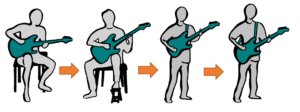
Image Source: bestbluesguitarlessonsonline.com
One of the main differences will be that your guitar weight won’t have as much of an impact on your back, but it will still bother you if you don’t sit straight.
Slouching when you play guitar will ultimately give you both neck and back pain.
Wrists
Your wrists will also hurt you if you don’t play with good form.
Bending your wrists too much and also not bending them as much are both usual causes of pain.
The height of your guitar strap is essential in maintaining the proper and most comfortable wrist angle for you.
Wearing your guitar strap too low will keep your wrist excessively bent for almost any movement.
Make sure that you find a height that allows you to play all the notes on the fretboard without any extra effort.
You should definitely read one of our articles around this topic:
This article will help you find the exact height that you should wear your guitar strap, and also some of the advantages and disadvantages of wearing it low or high.
Shoulders
Aim to relax your shoulders at all times and maintain them in a natural position.
If your guitar strap is not wide enough, this can also allow for unbalance weight distribution around your shoulder.
Make sure to use a wide and comfortable guitar strap if you usually play your guitar standing up.
On the other hand, if you normally sit down while playing your guitar, then still, keep your shoulders relaxed and straight all the time.
All these small changes to your playing form will help you in the long term if you are planning on playing guitar for many years to come.
Elbows
Your elbows can hurt you as well, especially your left elbow.
Having to use your fretting hand all the time makes each movement around the guitar neck tiring for your muscles.
As a rule of thumb:
- Keep your fretting arm as close to your body as possible and only lift it sideways when necessary.
12- Record yourself playing and analyze your progress
The moment I started recording myself playing guitar was the moment I really started to see my weaknesses and strength as a guitarist.
At the very least, I was able to notice what mistakes exactly I was making that were keeping me from getting faster and better.
This was huge for me at the time!
Seeing and hearing what I play allows me to gain a different perspective that makes it easier to criticize my abilities as a guitar player.
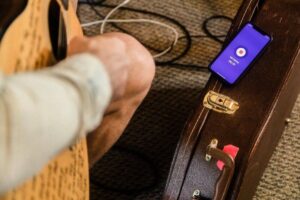
The first time I heard and saw myself playing the guitar, not only did I notice that I was really bad, but I also noticed extremely bad habits and postures that I had to then train myself to stop doing.
At that point, it wasn’t just about how many notes I was missing on average, or how bad that Sweet Child O’ Mine riff was sounding, it was also my back posture and just the overall beginning energies that I was “screaming” all over the place.
Trust me on this one, grab your phone, and take a video of you playing whatever you are currently practicing (audio could also work).
Then go ahead and watch it multiple times and see what you can start working on improving!
Most importantly, you will be able to come back to this video months from now and you will see how far you’ve come since then.
This is also an amazing way to find inspiration and encouragement to play and practice even more.
13- Apply the right amount of force on the frets and use your fingertips
Most beginners tend to apply extra pressure on the strings when they start learning to play the guitar.
This causes their fingers to be tense, especially when they are just starting to play chords.
A common reason for this is that they are pressing in between the middle of the frets and not applying the pressure right by the actual fret strips.
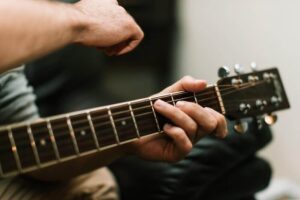
If you think that you might be doing this, then I encourage you to do this:
Press the string slightly to the left of any fret strip and start picking the string from the beginning.
You will notice that as soon as your string makes contact, then the note sound is produced very clearly and smoothly.
In other words, you don’t need to press the strings onto the fretboard, this will rather detune your guitar.
Also, make sure that you are using just your fingertips to do this.
Unexperience guitarists tend to play with the “face” or frontside of their finger and usually what that does is that it prevents the strings below from properly making a sound.
14- Prioritize good form over speed
In order to combine every piece of advice that we have given you up to this point, it’s good to remind you that you should always prioritize good form over speed.
This means that while you go ahead and create the habit of using all these tips, you should do so slowly.
If you have played guitar for a while, then more likely than not, you have created a few bad habits.
These bad habits won’t disappear overnight.
So pace yourself accordingly and allow time to do its thing.
Good speed comes with good form, and good form takes time to develop
15- Sometimes is more about what you don’t play than what you play
This is a very difficult concept to understand at first, but I’m sure you’ve heard the phrase “less is more” before.
Guitarists such as B.B King, John Frusciante, and John Mayer are some great examples.
The main idea is to play in a fairly minimalistic and solid style without too much flash but still manage to catch the ear of an audience with what you play.
Of course, for those of you that just want to shred, this is useless advice, but still, make an attempt to apply this concept as much as possible whenever you’re writing your own music and you will see how different it turns out in the end.
Another way of looking at it is when we think about “less is more” theoretically.
Especially by using techniques such as legato, hammer-ons, and slides, we can play the same notes faster and smother instead of using our picking hand each time we want to play a note.
16- Never play faster than what it takes you to play correctly
If whatever you’re trying to play at a regular speed is not sounding good at all, then take a step back and slow yourself down.
This is where having a metronome becomes very helpful.
“Never play faster than what it takes you to play correctly” basically means that you should never sacrifice accuracy for speed.
Beginners are very guilty of this as they tend to learn to play the guitar by learning their favorite songs.
There’s nothing wrong with this unless you try to play a song at its normal speed and you’re lacking good form and precision.
At the end of the day, you’re essentially delaying your progress and learning bad habits that will significantly and negatively affect your playing speed.
17- Don’t ignore working on chord progressions and chordal exercises
The main topic of this article has been around how to increase your guitar playing speed, and most of the time when we think about “playing speed”, we focus on soloing and shredding.
This can make you a little less versatile as a guitar player since you tend to focus on just being good at that one thing.
While this could be good in some cases, it really affects you in the long term when you attempt to try new things with other guitar players or a band
Being good at playing chord progressions can also allow you to mix rhythm and lead guitar at the same time.
Just like Jimi Hendrix used to do, and many other great players out there; this is an amazing form of adding dynamics to your songs.
Not only this but knowing many different chord shapes can help you choose the ones that are faster for a specific part of a melody.
For example, when playing barre chords, instead of using your index fingers to press all the strings as a capo, you can also use it to only press the first string of the chord.
This allows you to add more accompaniments when you’re either arpeggiating or strumming.
18- Watch videos of really fast guitar players
Doing this won’t directly have any impact on your guitar playing speed but it will definitely allow you to get inspired by the techniques and how those guitarists play.
If you go to YouTube and do a quick search for “fast guitar players”, you will get tons of good video recommendations:
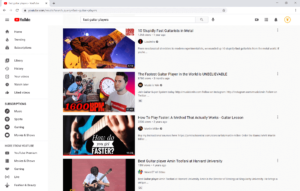
Make sure to watch a few of them and take notes on their posture, most played fretboard positions, and all the techniques that they use to increase their guitar playing speed.
If you have good knowledge about scales, then pay attention to their favorite scale position or even just their favorite chord shapes.
Most of the time, you will even find very small pieces of a song or solo that are very challenging to play.
You can then use those as new stepping stones while you attempt to learn and play them.
19- Learn to improvise while applying these techniques
Alright, so let’s assume that at this point, you know which techniques are better for playing guitar faster.
You know that using alternate picking, sweep picking, and economy picking are very good ways to increase your speed.
Also, you are able to recognize how to quickly do chord progressions, and also which chord shapes let you do more things at once.
Now, how do you put all that together?
This is where learning to improvise becomes very important!
According to Wikipedia:
Musical improvisation is the creative activity of immediate musical composition, which combines performance with communication of emotions and instrumental technique as well as spontaneous response to other musicians.
In other words, improvising is a great way of getting used to doing everything that we talked about on this article, all at once.
You can use it as a way of “gluing it all together”!
Now, this doesn’t mean that everything you need to do from now on is focusing on learning to improvise.
Rather get comfortable in expressing yourself through your guitar and forget about playing fast for a moment.
Just play and use your abilities instinctively!
As a bonus, a great idea that you can go ahead and do is to search on YouTube for fast-paced backing tracks to play and jam over.
Trust me, this will bring the godly-fast guitar player that’s inside you!
20- Be patient and enjoy the journey
At the end of the day, if you stick to playing guitar for a significant amount of time, you will eventually reach your goals.
Don’t push yourself too hard if you think it’s going to get you frustrated and make you lose motivation.
Instead, enjoy the journey and trust the process!
Don’t force yourself to play fast unless you must; you picked up the guitar for a reason, never forget that everything will be alright as long as you keep playing.
I’ll leave you with this quote by Eddie Van Halen:
“If you want to be a rock star or just be famous, then run down the street naked, you’ll make the news or something. But if you want music to be your livelihood, then play, play, play and play! And eventually, you’ll get to where you want to be.”

An avid storyteller and music lover that devotes all his free time to mastering the art of playing guitar. I’ve played acoustic for 6 years, and recently started playing electric guitars. Currently playing an Epiphone SG Special!

